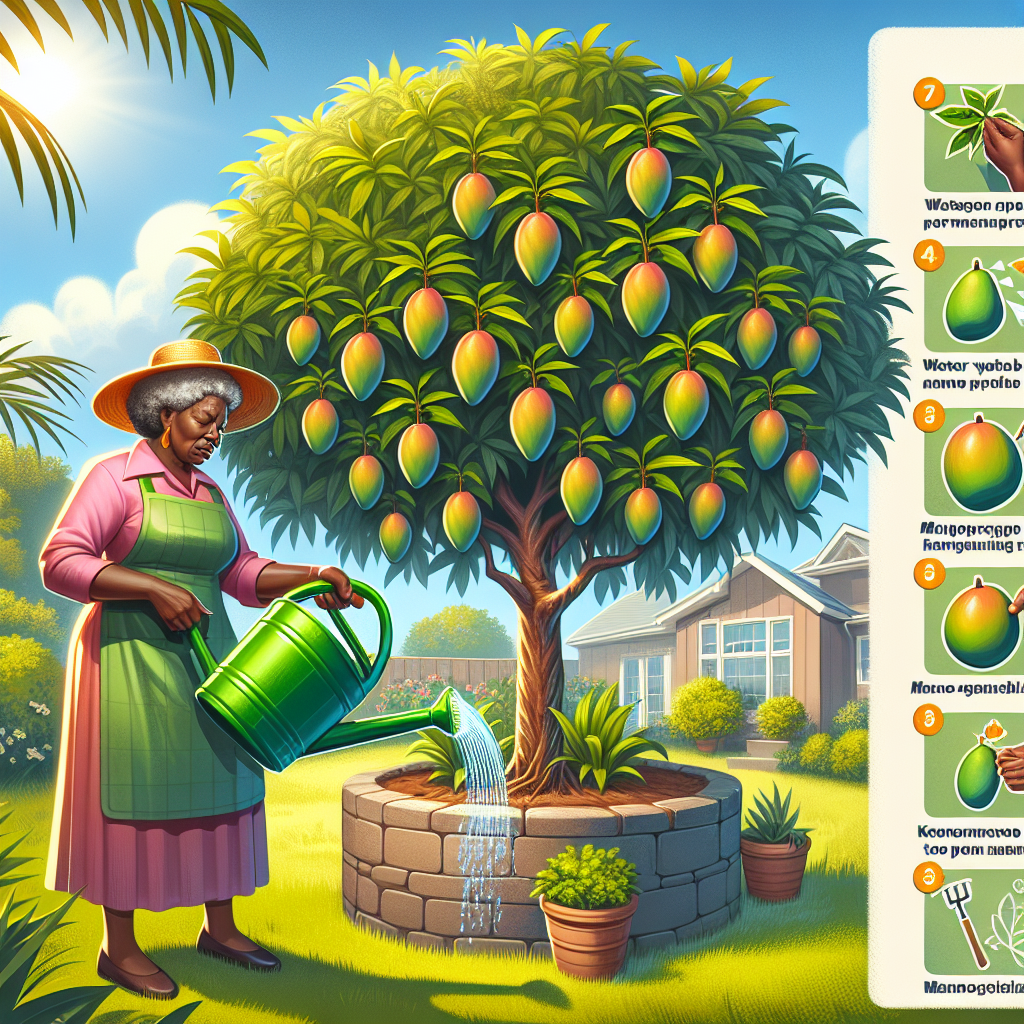Guide to Growing Mangoes at Home
Mangoes are delicious tropical fruits that are enjoyed by many all over the world. Known for their sweet and juicy flesh, mangoes can be eaten on their own, used in smoothies, salads, or even made into desserts. If you love mangoes and have always wanted to grow your own, this guide will provide you with the necessary steps to successfully grow mango trees right at home.
1. Climate and Location:
First and foremost, it is essential to consider the climate and location when growing mangoes. Mango trees thrive in tropical and subtropical regions with warm weather and high humidity. They require temperatures between 70°F (21°C) and 90°F (32°C) for optimal growth. If you live in a colder region, you can still grow a mango tree indoors or in a greenhouse.
2. Selecting the Right Variety:
There are hundreds of mango varieties available, each with its unique taste, size, and appearance. When choosing a variety to grow at home, consider factors such as tree size (dwarf or standard), fruit size, flavor profile (sweet or tangy), disease resistance, and harvest period. Some popular homegrown varieties include Alphonso, Keitt, Kent, Palmer, Tommy Atkins, and Valencia Pride.
3. Soil Preparation:
Mango trees prefer well-draining soil that is rich in organic matter. Before planting your mango tree, prepare the soil by incorporating compost or well-rotted manure into the planting area. The soil pH should ideally be between 5.5 and 7.5 for optimal growth.
4. Planting Process:
Start by digging a hole that is double the width of the root ball of your mango sapling or seedling. Gently remove the plant from its container or prepare the seedling by removing any flesh from around the seed (if using seeds). Place the tree in the hole, ensuring that the top of the root ball is level with or slightly above the soil level. Fill the hole with soil, firmly pressing it down to eliminate any air pockets. Water the tree thoroughly after planting.
5. Watering and Fertilizing:
Mango trees require regular watering, especially during the dry season or when they are young and establishing roots. However, be careful not to overwater as this can lead to root rot. Maintain a consistent watering schedule, providing enough moisture to keep the soil evenly moist but not waterlogged.
Fertilize your mango tree every few months during its active growing season using a balanced organic fertilizer. Avoid using high-nitrogen fertilizers as they can promote vegetative growth instead of fruit production.

6. Pruning and Training:
Pruning mango trees is necessary to promote proper structure, airflow, and fruit production. Begin pruning when your tree is young by removing any crossing or crowded branches. As it grows, remove any dead or diseased wood and thin out excessive growth to allow sunlight penetration.
Training your mango tree by espaliering or trellising can help manage its size and shape, making it more suitable for smaller spaces.
7. Pest and Disease Control:
Mango trees are susceptible to various pests such as aphids, mealybugs, scale insects, and fruit flies. Regularly inspect your tree for signs of infestation and treat them promptly using organic pesticides if needed.
Common diseases that affect mango trees include anthracnose (fruit rot), powdery mildew, and bacterial black spot. Practicing good sanitation by removing fallen leaves and fruit can help prevent disease development. If necessary, apply fungicides recommended for mangoes.
8. Harvesting Ripe Mangoes:
The waiting time for mangoes to ripen may vary depending on the variety you choose. Generally, mangoes take around three to six months from flowering to fully ripe fruit. Look for color changes, such as yellowish or reddish hues, and give the fruit a gentle squeeze to determine ripeness. Ripe mangoes should have a fruity aroma and yield slightly to pressure.
9. Storage and Enjoyment:
Once harvested, mangoes can be enjoyed immediately or stored for a short period if needed. Store unripe mangoes at room temperature until they ripen. To extend their shelf life, move ripe mangoes to the refrigerator, where they can stay fresh for up to several days.
Growing your own mango tree at home can be a rewarding experience. With the right care and attention, you can enjoy your very own homegrown mangoes that are fresh, flavorful, and truly satisfying.














